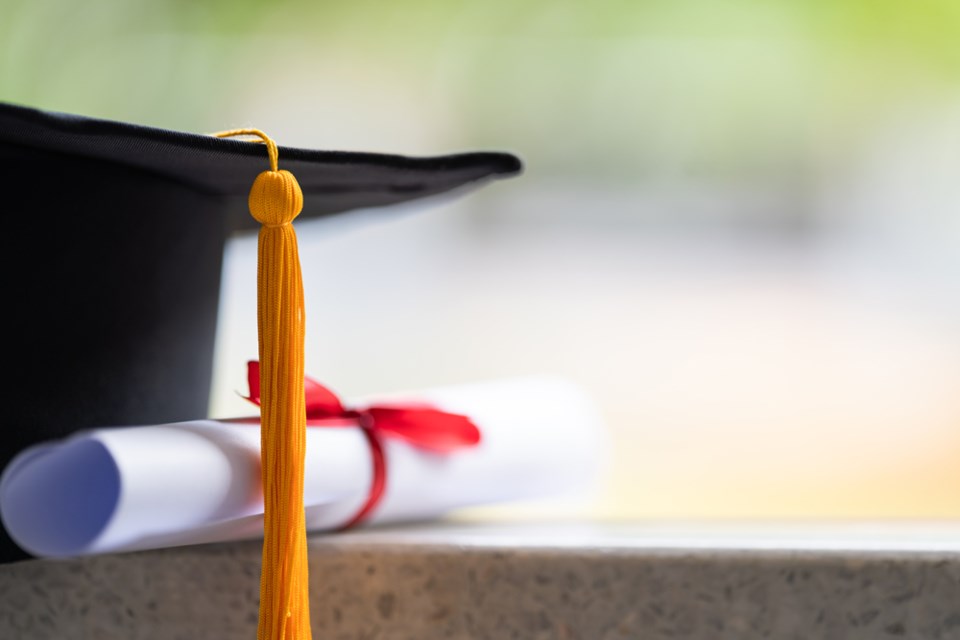As the Sunshine Coast Class of 2022 crossed the stage last June — in the first in-person graduation ceremonies in several years — most categories were at the top of provincial rates.
For the 2021/2022 school year in School District No. 46, across all students, the graduation rate was 90 per cent. B.C. residents graduated at 92 per cent, Indigenous students at a rate of 81 per cent, and students with individual education plans had a rate of 78 per cent.
The six-year completion rate (where it took a student six years to graduate after starting Grade 8 rather than four) of non-Indigenous students reached 96 per cent, the same as the previous year, which surpassed the previous all-time high of 93 per cent in 2020.
By comparison, the provincial completion rate for all students was 88 per cent, 92 per cent for B.C. residents and 75 per cent for Indigenous students.
"We are actually really proud of the rates that we had this last year,” superintendent Kate Kerr told Coast Reporter after she shared the completion rates of the 2021/2022 school year at the Jan. 11 school board meeting.
“We see our overall rates maintaining high at 96 per cent. We did see a small dip for our Indigenous students, but we also know we have a very small cohort, so that can mean a difference of one student, for example, but the trend over time has been that we continue to improve our graduation rates,” she said.
Kerr said the school district is happy to see more success among the six-year completion rates, which includes students earning their Dogwood Diploma.
“We know that learning takes time and patience and that people learn at different rates. So we want to also recognize that that is success even when they may take seven years or eight years to obtain their Dogwood,” Kerr said.
New graduation requirements
In her report to the school board, Kerr also mentioned the Ministry of Education and Child Care’s new Indigenous-focused graduation requirement coming into effect for the 2023/2024 school year this fall.
The move is a part of ongoing truth and reconciliation efforts, and “recognizing that all of our students should be graduating with a rich understanding of the land in which we live and the Indigenous peoples of this land,” Kerr said. In Sunshine Coast schools, the journey started a few years ago when SD46 began English First Peoples 11 and English First Peoples 12 in its two larger secondary schools, as well as a she shashishalhem language course.
Starting next school year, all students on the Coast will receive English First Peoples 11 as a baseline. An information sheet for parents and caregivers is being developed by SD46.
“However, our hope is to grow those courses and create some board authorized courses which would be local courses and that would be in collaboration with our Indigenous partners with the Indigenous advisory circle,” the superintendent said.



